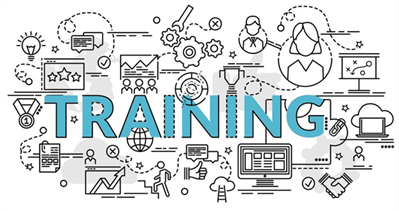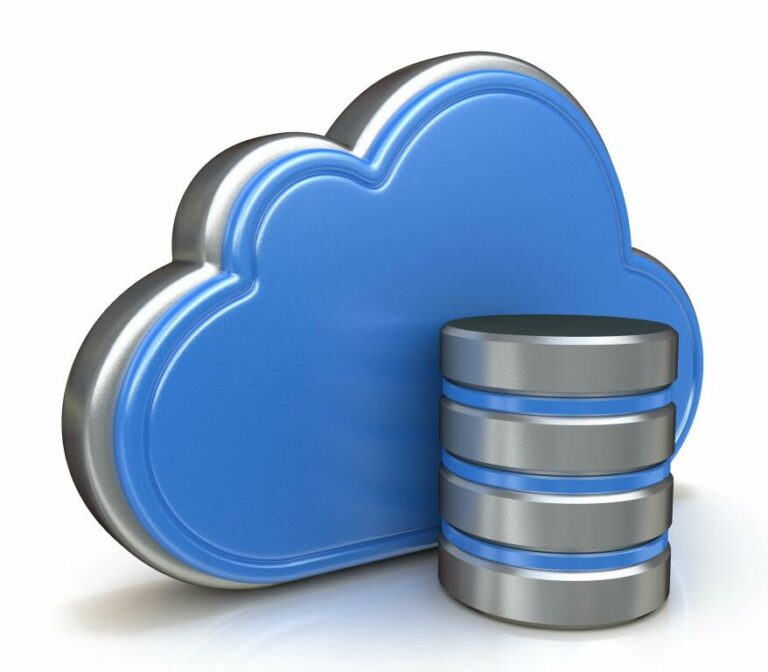Content
- Edge Computing Vs Fog Computing: Is There A Real Difference?
- What Is Fog Computing?
- Trenton Systems
- Background: The Internet Of Things Iot & Cloud Computing Are Driving The Edge
- So, What Kind Of Architectures Should I Be Investing In, Cloud, Edge, Fog Computing?
- Home Of Rf And Wireless Vendors And Resources
In turn, cloud computing services providers can benefit from significant economies of scale by delivering the same services to a wide range of customers. At SolutionsPT we’re in a great position to help you to adopt the optimum architecture to meet your businesses needs. As distributors of leading industrial technology for Edge and Cloud computing, from the latest innovations from Stratus, the ztc Edge to AVEVA Cloud software, we’ve got solutions to meet your needs, whatever they may be. In an age where Artificial Intelligence is becoming much more prevalent, Machine Learning could make use of Fog Computing by processing data locally in the learning phase before the data is stored within the Cloud. Cisco has also categorized fog computing as just a type of edge computing technology. The Edge Analytics software is typically deployed on an IoT gateway and processes the sensor data from multiple field units.

The device with network connection, storage and computing feature is known as fog node. Examples include switches, controllers, routers, servers, cameras and so on. This page compares edge computing vs cloud computing vs fog computing and mentions difference between edge computing, cloud computing and fog computing.
Edge Computing Vs Fog Computing: Is There A Real Difference?
And although some of this processed data can be stored at the edge, much of it is being sent back to the cloud for permanent storage, but remember, this is being done after the raw data has been processed by edge servers. Edge devices, sensors, and applications generate an enormous amount of data on a daily basis. The data-producing devices are often too simple or don’t have the resources to perform necessary analytics or machine-learning tasks. Whether there’s a difference between edge computing and fog computing depends on who you ask. Some say there are legitimate technical differences between the two, while others say the differences are purely semantic.
Moreover it is expected to have about 50 billion IoT devices to be online by the year 2020. Present cloud computing model is not capable to handle huge bandwidth data due to its latency, volume and bandwidth requirements. The fog computing and edge compuring have been developed to address all the issues faced by cloud computing model.
- • Cloud computing is a model to enable convenient, on demand network access to shared pool of configurable resources e.g. servers, network infrastructure, storage, applications etc.
- You need to consider what tasks you need to complete with the data being gathered, is it for monitoring, data analytics or controlling your operations and design a structure to suit those requirements – to make sure the data reaches the right people, at the right time.
- We can avoid the complexity of owning and maintaining infrastructure by using cloud computing services and pay for what we use.
- These local servers are running the applications that crunch this data and provide user-oriented insights.
- Edge devices, sensors, and applications generate an enormous amount of data on a daily basis.
As you probably already figure it out, I am a big believer in Cloud Computing and what it still has to grown to. But, I have to admit that with all the connected devices, Cloud Computing still needs help. Johan has 15 years background working with marketing in all possible type of projects. A true entrepreneurial spirit operating between strategic and hands-on details. The Industrial Internet Consortium is today one of the largest communities that spreads knowledge about the benefits of Fog Computing, Edge Computing and Industrial Internet technologies, use-cases and benefits.
What Is Fog Computing?
Fog Computing networks can create low-latency connections between devices and analytics endpoints. This reduces the amount of bandwidth needed compared to sending the data back to a server room or data center in the Cloud for processing. It can also be used where there is no bandwidth connection to send data, so must be processed close to where it is created. Fog Computing is becoming widely known as being the one that moves cloud computing closer to the ground, extending its capabilities and allowing storing and processes directly on the devices, minimizing the amount of data that is transferred to the cloud. The result is a Cloud Computing environment which can focus on heavier tasks while Fog Computing takes care of short-term, localized analytics.
The consortium merged withIndustrial Internet Consortiumin 2018 as there was a significant overlap between the two groups. The Fog Computing architecture is used for applications and services within various industries such as industrial IoT, vehicle networks, smart cities, smart buildings and so forth. The architecture can be applied in almost any things-to-cloud scenario. Private clouds enable a organization to use cloud computing technology as means of centralized access to IT resources. The edge computing is optimization of cloud to move the compute closer to the data source where data is being generated.

But the cloud is often too far away to process the data and respond in time. Connecting all the endpoints directly to the cloud is often not an option. Sending raw data over the internet can have privacy, security and legal implications besides the obvious cost impact of bandwidth and cloud services. We live in a world of mass connectivity, where everything around us is, and will be, connected to the internet, which will make the online environment look like a highway in rush hour traffic. Even the most advanced cloud computing architecture still struggles with this large amount of data. Scott Shadley, Vice President of Marketing at NGD Systems, a manufacturer of computational storage drives , says that there really isn’t a difference between edge computing and fog computing.
We can avoid the complexity of owning and maintaining infrastructure by using cloud computing services and pay for what we use. It gives more choice to process data where it’s most appropriate to do so. For some applications, data may need to be processed as quickly as possible, such as where connected machines need to be able to respond to an incident as soon as possible.
• To analyze most time sensitive data at the edge of the network close to where they are generated rather than sending huge amount of data to the cloud. But unlike Edge Computing, Fog Computing architectures stretch beyond the Cloud to where data is eventually stored and can be analysed, such as in the Cloud or a data centre. With the combination of the ability to run applications at the Edge and the capacity of the Cloud, Fog computing can act as a bridge, bringing together the Cloud and the Edge. The advent of the Internet of Things is responsible for businesses’ and organizations’ newfound influx of raw data.
Trenton Systems
Well, like Edge computing, processing of the data takes place closer to where the data is collected, however in Fog computing that data is transmitted by Edge devices to a gateway for processing and data analytics, then sent back to the Edge device for action. The benefits being that it removes the need to own and maintain your own IT infrastructure, and the scalability of Cloud data storage is limitless. Also, the ability to extend the reach of your data to anyone with network access, anywhere, allows you to make improved insight-driven business decisions, faster. So, you’re effectively sending only important data back to the cloud instead of an endless stream of raw data, which costs more money to transfer and creates a rise in latency. The metaphorfogoriginates from the idea of a cloud closer to the ground. During 2015 Microsoft, Cisco, Intel and a couple of other enterprises were gathered in a joint consortium to push for the idea of Fog Computing, called Open Fog Consortium.
Think of edge computing as cloud computing’s helpful, fat-trimming aide in the field, pre-processing all that data and making it nice and tidy before it delivers it to the cloud. Businesses and organizations are generating more raw data than ever before – so much, in fact, that sending it to the cloud for processing and storage has become a costly and inefficient endeavor. He has worked with web and communication in Sweden and internationally since 1999. Since 2012, Johan has been focusing on real-time communication, and the business and operational benefits that comes with analyzing streaming data close to the data sources. • Cloud deployment model represents specific type of cloud environment, which is primarily distinguished by ownership, size and access. Public cloud, private cloud, hybrid cloud, community cloud, multi-cloud, distributed cloud etc.
With the vast amounts of data being generated by increasing numbers of Industrial IoT devices such as sensors, the cost of bandwidth to transmit all that data into the Cloud could start to become cost prohibitive. So, organisations with substantial amounts of data can deploy edge computing solutions to process data locally, close to the original source, which can reduce latency and avoid bottlenecks. The downside to Cloud computing is the reliance on internet connectivity, cloud security and network performance – meaning its strength does not lie in real-time processing and control but more in business analysis and continuous improvement.
Background: The Internet Of Things Iot & Cloud Computing Are Driving The Edge
This data needs to be crunched into something usable for the end user, whether that’s an employee or a fully autonomous machine, and it needs to be crunched quickly so that businesses and organizations can remain competitive amid the ongoing Fourth Industrial Revolution. In this blog post, we’ll provide a brief background on how the Internet of Things and cloud computing are driving edge computing/fog computing, discuss the benefits of edge computing/fog computing, and talk about whether there’s an actual difference between the two. In the Fog Computing architecture, the processing takes place in a smart device close to the source. It can be an IoT gateway, a router or on-premise server, where the software reduces the amount of data sent to the cloud and takes action depending on the business logic applied in the Fog Node. • Cloud computing is a model to enable convenient, on demand network access to shared pool of configurable resources e.g. servers, network infrastructure, storage, applications etc. The increasing availability of low-cost Internet of Things sensors, Edge devices, and Cloud analytics software means that there are options to suit every size and structure of businesses.

• Public cloud is publicly accessible cloud environment owned by a third party cloud provider. • Cloud computing has few essential features service models and deployment models. Cloud computing has become increasingly popular in recent years, with more and more companies migrating to the cloud.
So, What Kind Of Architectures Should I Be Investing In, Cloud, Edge, Fog Computing?
In turn, less data travels to the cloud, and businesses and organizations save money on data transfer and improve response times. The more data they send to the cloud for analysis and storage, the more money they spend on transferring said data. We have already seen cloud computing used for processing, analysis and storage of the data from client devices. Due to evolution of IoT devices, huge amount of data are generated daily.
From Cloud Computing To Fog Computing
Edge computing solutions on the other hand involves collecting and storing data at the Edge of the network, closer to where it is being gathered, such as directly on the plant floor. Processing data takes place locally in real-time, resolving the network connection and latency issues in Cloud computing. Incorporating trusted, high-performance rugged servers closer to your IoT smart devices can help you do both, no matter the conditions of the environment on land, in space, in air, or at sea. Here at Trenton Systems, when we use the term edge computing, we mean both.
Home Of Rf And Wireless Vendors And Resources
The Edge Analytics software is deployed on an IoT gateway on a remote unit, or embedded, and processes the sensor data from that single unit. You need to consider what tasks you need to complete with the data being gathered, is it for monitoring, data analytics or controlling your operations and design a structure to suit those requirements – to make sure the data reaches the right people, at the right time. • It provides services which can be accessed from any place and at any time. CISCO survey forecasts that 50 billion devices will be connected to the internet by 2020, and we need to be prepared to cope with this rapid expansion. Our blogs cover the latest ruggedized computing news and company updates.
The main idea behind Fog computing is to improve efficiency and reduce the amount of data transported to the cloud for processing, analysis and storage. But it also used for security, performance and business logical reasons. Fog computing, also known as fog networking, is a decentralized computing architecture in which business logic and computing power are distributed in the most logical, efficient place between the things producing data and the cloud. Fog computing essentially extends cloud computing and services to the edge of the network, bringing the advantages and power of the cloud closer to where data is created and acted upon. Fog extends the cloud close to the devices which produce or generate the data.
Our definition of edge computing is any data processing that’s done on, in, at, or near the source of data generation. Smartwatches use sensors to measure and collect data about your body – your temperature and your heart rate, for example – but https://globalcloudteam.com/ this is just raw data. It must be computed to give you the insight you desire, and this wouldn’t be possible without sending it to the cloud for analysis. All the end devices directly communicate with the cloud servers and cloud storage devices.
Following table mentions difference between edge, cloud and fog computing. Trenton Systems’ talented engineers are on standby to help you design a rugged computing solution Fog Computing vs Cloud Computing for your unique edge computing application. Crosser designs and develops Streaming Analytics, Automation and Integration software for any Edge, On-premise or Cloud.





